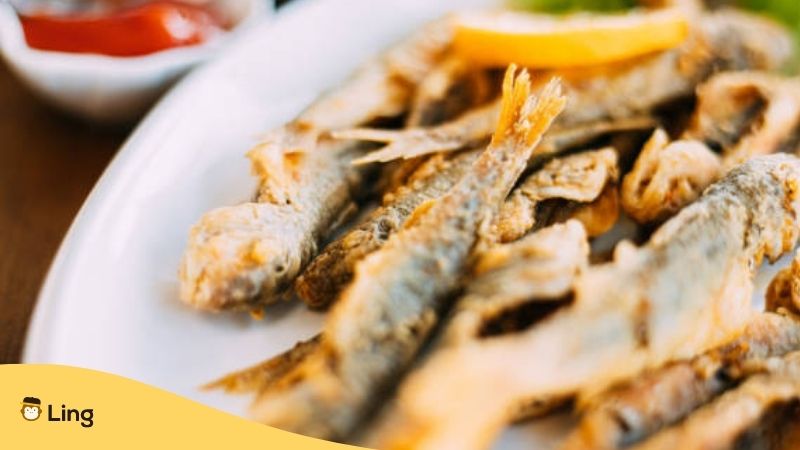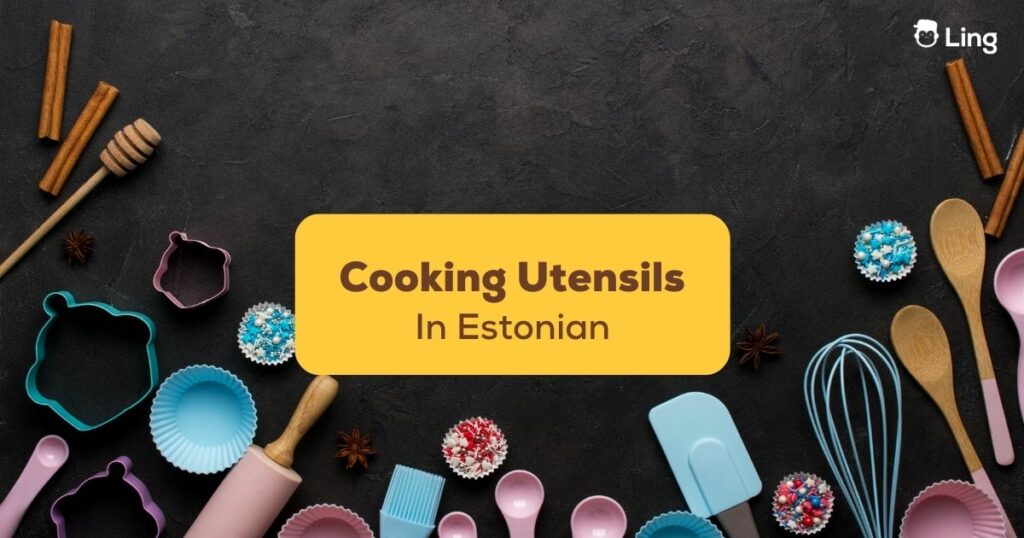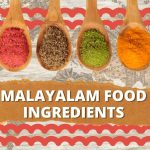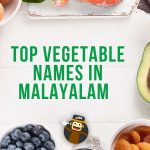Estonian cuisine includes numerous mouth-watering dishes and puddings. Whether attempting to create your own menu or are in a restaurant or cafe enjoying some tasty Estonian dishes, knowing how to say the names of the cooking Utensils in Estonian is essential.
Cooking Utensils In Estonian
Pots – Noad
No Estonian kitchen (köök) would be considered complete without a wide selection of pots. These are particularly useful when it comes to cooking numerous popular pasta and noodle dishes. It is recommended that a larger pot, perhaps a five-gallon or a seven-gallon pot is used when boiling a pound of noodles. The worktops of an Estonian kitchen are likely to have a variety of pots including the non-stick variety as well as those made of copper and iron.
Colanders – Kurnid
Having cooked noodles and pasta it will become necessary to drain them. The bigger the colander the better in the Estonian kitchen, and Estonian colanders can be made from a variety of materials including plastic, copper and aluminium.
Pans – Pannid
A good set of pans is just as essential among an Estonian chef’s set of Estonian cooking utensils as a decent set of pots. Commonly used pans include those for baking and frying. Other useful pans include the chestnut roaster, as well as a general roasting pan and the crepe pan.
Cazuelas
A special type of pan, cazuelas come in a variety of sizes and are particularly prized for their heat-retaining properties. This quality means they are particularly useful when a dish needs to be slow-cooked. The kitchen equipment comes in sizes that make cooking individual portions of Estonian cuisine possible.
Ladles – Kulbid
Before embarking on a tasty recipe, Estonian cooks will make sure they have a variety of ladles among their kitchen utensils handy to deal with soups and sauces. Made from stainless steel, ladles come in a number of shapes and sizes depending on whether they are needed for stirring or pouring.
Knives – Noad
A good set of high-quality knives is a must for preparing food in any Estonian kitchen. This must include a sharpening steel as a blunt knife is far more dangerous than a sharp one! A large kitchen knife is essential, as is a paring knife. A serrated bread-cutting knife (Leivanuga) is another must and it would be useful to have a mezzaluna (a two-handled curved blade used for chopping), a meat cleaver, a french fry cutter, a chestnut knife, a cheese knife and a sturdy pair of poultry scissors.
Banneton
Traditionally a wicker basket, bannetons are used for proofing sourdough bread dough. The dough is then removed and placed in a tray before baking. A proofing cloth is also needed to cover the dough as it is being prepared during the proofing process and needs to be made out of coarse material such as linen to ensure that the dough doesn’t stick to it. Nowadays, bannetons can be made from plastic or silicone.
Cheese Grater – Juusturiiv
An absolutely essential utensil for any kitchen in Estonia is the chees grater. These are made of metal and come in a variety of designs, most commonly flat or four-sided towers.
Chopping Board – Lõikelaud
A chopping board is useful for cutting up all sorts of ingredients that go into Estonian cuisine. From meat to vegetables to cheese, a sturdy chopping board should be conveniently available hand in every Estonian kitchen for every style of cooking.
Oven – Ahju
It goes without saying that no kitchen in Estonia can be called complete without an oven. Estonian recipes often require baking. The oven should also come with a variety of baking trays.
Tableware – Lauanõud
Consisting of plates (taldrikud), bowls (kausid), knives (noad), forks (kahvlid) and spoons (lusikad) as well as scoops (kulbid) tablecloths (laudlinad) and other utensils, Estonians will have all the tableware accouterments handy when they host a dinner party in style.

Delicious Dishes
Now we know what to call our cooking utensils in Estonian, let’s take a brief look at some of the delicious dishes we can expect to be served in Estonian dining rooms and restaurants.
Eesti Kartulisalat
Considered a staple dish of Estonia, Eesti Kartulisalat is a potato salad made with boiled carrots and potatoes. Added into the mix are smoked sausage, cucumber and a boiled egg. Peas are usually included and this delicious meal is mixed together with mayonnaise and sour cream. The final touch is a slice of apple to add a touch of sweetness.
Hernesupp Suitsukoodiga
This traditional Estonian soup consists of smoked pork bones, garlic and onions all boiled up together. Dried peas may also be added to the boiling stew until they become soft. Carrots may also be added. The broth can be pureed and the dish is often served up on New Year’s Eve. It is said that the soup is particularly popular with older Estonians because the smell offers nostalgic memories of their childhood.
Vürtsikilu Suupiste
This Estonian dish is a sandwich of rye bread and sprats (similar to sardines). The bread and fish are often accompanied by crushed garlic and cream cheese. Boiled egg whites, dill and green onions may be added as a garnish. This Estonian dish is often offered in restaurants as a starter.
Mulgikapsad
Bacon, or other pork products, are cooked slowly with sauerkraut and barley. Although it can be served as a starter, Mulgikapsad is most often offered as a hearty main course. Served with slices of pork and fried onions, this very Estonian dish is popular year-round and is also served up at celebrations like New Year and Christmas.
Cheatsheet Of Estonian Food-Related Vocabulary
| English | Estonian |
| bitter | kibe |
| bitterness | kibedus |
| cold | külm |
| delicious | maitsev |
| fishy | alane |
| flavorful | maitsekas |
| fresh | värske |
| hot | kuum |
| hearty | südamlik |
| salty | soolane |
| saltiness | soolasus |
| sour | hapu |
| sweet | armas |
| sweetness | magusus |

Come Learn More Estonian With The Ling App!
If this brief look at cooking utensils in Estonian has whetted your appetite to learn more, why not download the Ling app today to learn more about the Estonian language? Ling makes learning a new language accessible and fun and can be found at App Store and Google Play.



































































